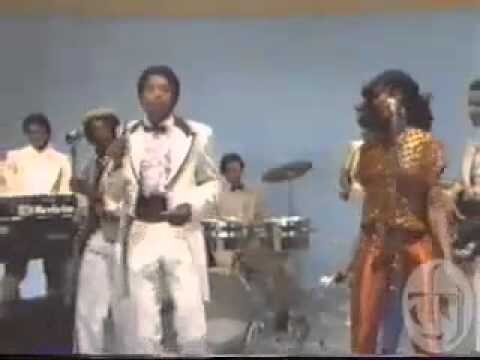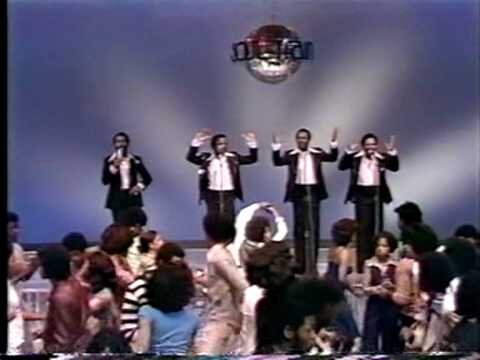Correct.
And there would only ever have been one original press of the LP made in the US around '73. Dave in post #17 suggests that the LP was repressed with the sticker around 75/76 on the back of northern scene plays but this is highly unlikely as the GSF label ceased operations around 1974. The label was another one of Lloyd Price's ventures in the music business.
The re-issues only started showing from the late 80's once the LP had become an established classic on the funk and rare groove scene.
To establish whether you have an original press or a reissue, it's really not necessary to go into all that stuff about matrix numbers or how many turns are in the run out groove. The far simpler and obvious method to check if you have an original press is - as mentioned in post #2 above - the gatefold sleeve of the LP consists of a hard thick card which is brown in colour on the inner surface of the sleeve.
The many reissues that have appeared since the 80s have had thin photo reproduced sleeves which are white in colour on the inner surface. I've yet to see a reproduction of this LP with thick brown card. Harder of course to check if you are buying a sealed copy on ebay or the net . In which case, as we say, only buy from a seller who is reputable and knows the score ...
As for the hard luck the group had with this record and the label , here's an extract of an interview with them :
.... They found a true believer in New York DJ Al G, who brought them to the attention of rock & roll legend Lloyd Price, who in turn signed them to his fledgling GSF label. By early 1973, they had two weeks of recording time booked at the newly built Venture Sounds studio in Sommerville, New Jersey. “The Skull Snaps were the first band to ever record at Venture, and also the first band I ever recorded,” remembers Skull Snaps engineer and mixer Ed Stasium, an industry veteran who has put his stamp on albums by the Ramones, Talking Heads, Mick Jagger, and Living Color. “To be honest, I had absolutely no clue what I was doing. I was just learning how to engineer. I wasn't even getting paid at the time. I was an intern kind of guy, collecting unemployment. I think I did a pretty good job for not knowing sh*t. But there was a lot of sweaty palms going on.” In the studio, the band was energized, jumping with all they had at the chance to finally get their music across. “We were playing live together as a trio all the time, and it was so tight, so big that we wanted to record that,” recalls Samm. Reaching deep, they poured themselves into the recording process. “We spent a lot of time in there,” says George. “We used to go into the studio at nine and not leave until four of five in the morning the next day. We put our talent to use and were very serious about what we were doing. And once the microphones were on, that was it. We did what we had to do.” According to producer George Kerr, the band made in two weeks an album that would have taken other bands three or four months to record. “I only produced who I liked at that time, and I loved them because they were so talented, so tight, they just fit together like hand in glove,” remembers Kerr. “Working with them was always cool, always focused, always happening,” adds Stasium. “They would roll through their three-piece thing live. It was all done in one or two takes. Just amazing.” Samm adds: “It was done so fast and so straight and to the point. We went into the studio and played, and things started to happen in there. It was quite an affair.” “The singing was powerful,” says Samm. “Everybody had such strong lead voices. We all took turns singing lead. That's what made the Skull Snaps so different from everybody else.” “Our harmony was also unique,” adds George. “I did the low parts, Ervin was in between that, and Samm was on high. And it just grew from that.” Instrumentally, Samm’s unbeatable bass grooves and Erv’s scratchy wah-pedaled guitar mesh with Bert Keyes’ lush orchestrations and funky horn arrangements, while George's devastating drums takes everything higher. “We went through the soul and funk and got into and the fatness of the music,” says Samm. “That's why all the tracks were so powerful.” The record opens with the love-is-the-drug anthem, My Hang Up Is You, which drives to the ears like a familiar hit. Retreating from wholesome themes, the band moves on to sing the glories of the ghetto hustler in I'm Your Pimp, a song used by legendary New York DJ Frankie Crocker as his show's closing theme. Adding political heft to the record, It's A New Day proclaims an era when black people "…ain't gonna step to the back of the bus no more!” The album is rounded out by the deliciously mid-tempo soul ballads Having You Around, I Turn My Back On Love, and the exceptionally catchy I'm Falling Out of Love. The album in the can, the band searched for a name. “Until then, we had been recording as the Diplomats,” explains Samm. “But people didn't know us for making funky music, so we decided we needed to come up with a new name, something catchy. So we threw it all up and down, but still didn't know what to call ourselves. And then Lloyd Price said, your music is so powerful it just cracks people's skull, man. So that was it. That's why on the album you saw the skeleton standing there with the skull in his hand lookin’ at it and the other pieces are on the floor. That was the whole concept behind the band.” In mid-1973, a few promotional singles of It's A New Day were released by GSF and started getting airplay by DJs in the New York area. The band held their breath, allowing themselves to dream a little. Copies of the album started trickling out. Then, just as quickly as it began, things fell apart. “The reason the record became a collectors item instead of a giant hit was because GSF closed their doors on it,” claims producer George Kerr. “GSF didn't do us no justice on this record at all,” remembers Erv with more than a hint of bitterness. “The way it looked to me, they didn't really intend to go so far with us, except maybe as a tax write-off. They didn't realize or care what they had on their hands.” “Not that many copies got out there,” recalls Samm. “I remember the promotion being stopped. That record had already been passed to (DJ) Frankie Crocker. All the correct steps were being made. But then the company suddenly folded. They were closed and gone so fast you didn't know which way was up with them. We could have been a success had we been on any other label at that time with that record.” Erv adds: “If we could have got in control of the album, maybe we could have hustled and got it out there to the public. But when you got families, the children come first. We had to move on. When you have the resources, you can do anything you want to do. We had nothing.” “If our record had come out now instead of then, it would be downloaded and wouldn't get lost through the cracks,” concludes Samm. “It's a whole different day…a different world. Ain't no telling what could've been.” The fiasco with GSF left the band in dire financial straights. “We never really got paid for doing the record,” recalls Erv. “I felt very proud of what we had done, but my pockets were crying,” adds George. Still, the band was able to keep it together in 1973 long enough to record a cover version of Manu Dibango’s Soul Makossa on Buddah under the alias of All Dyrections and to back Screamin’ Jay Hawkins on his Africa Gone Funky single for Queen Bee. By 1975, when Grill released the final Skull Snaps single, Ain't That Lovin' You b/w Al's Razor Blade, the band had already parted ways .... "




